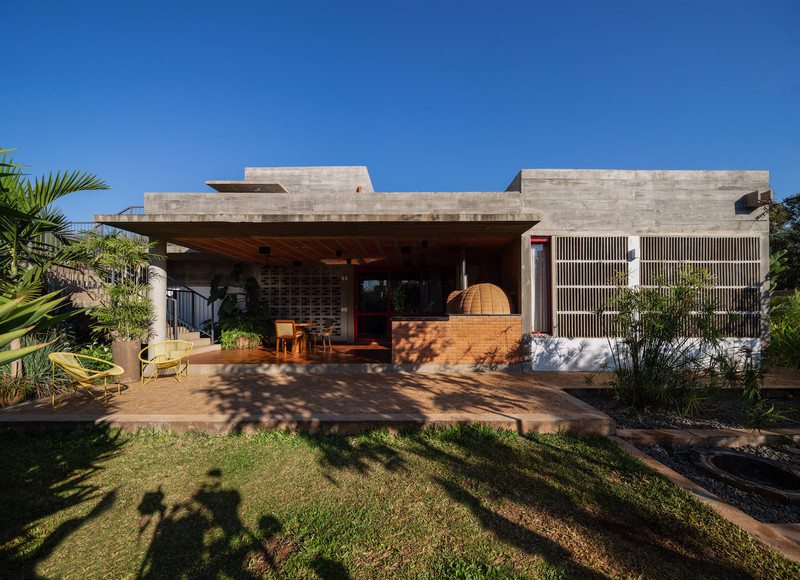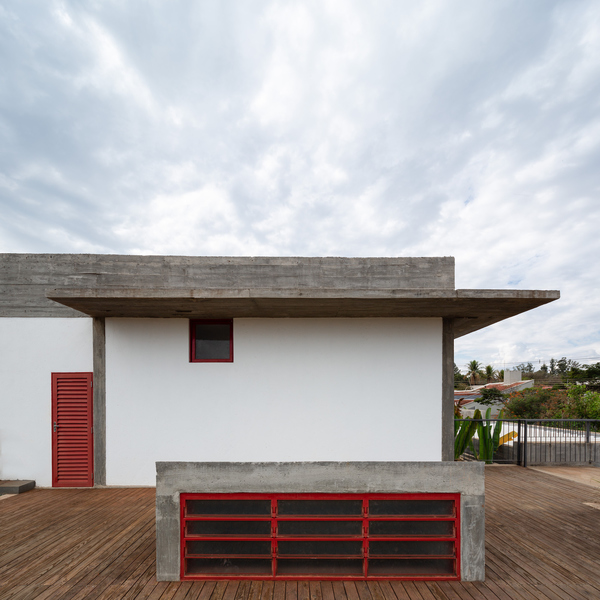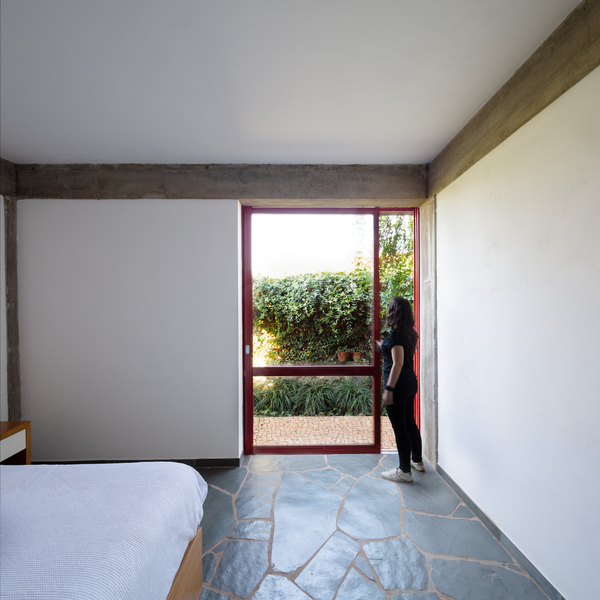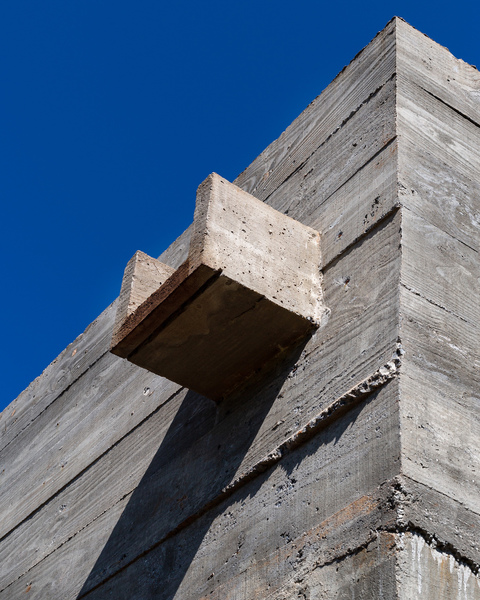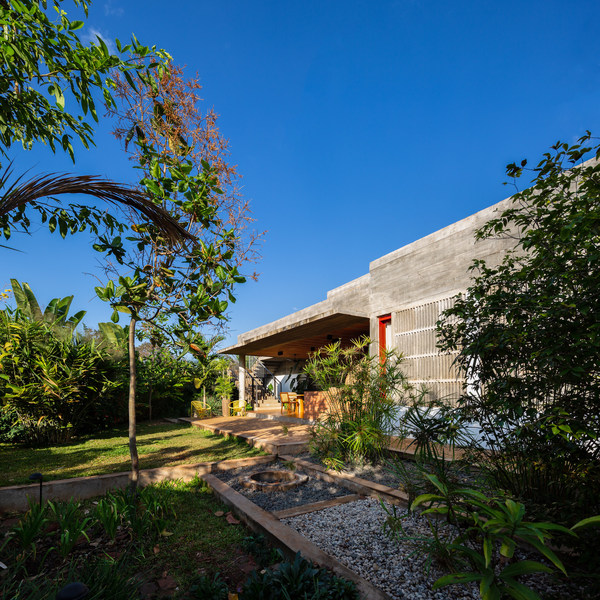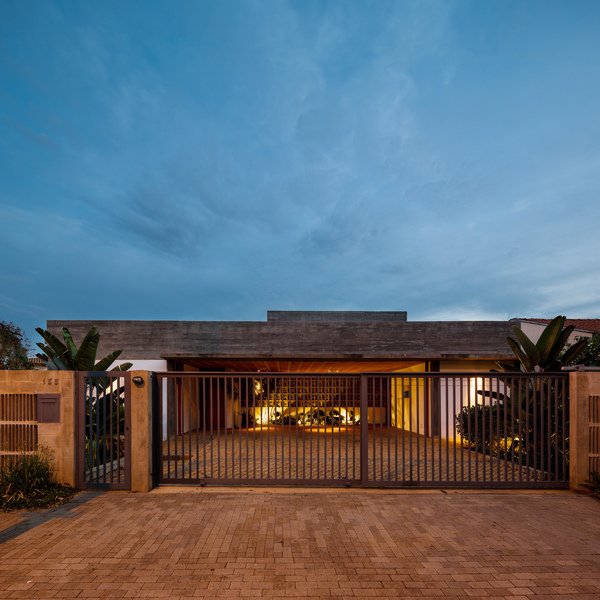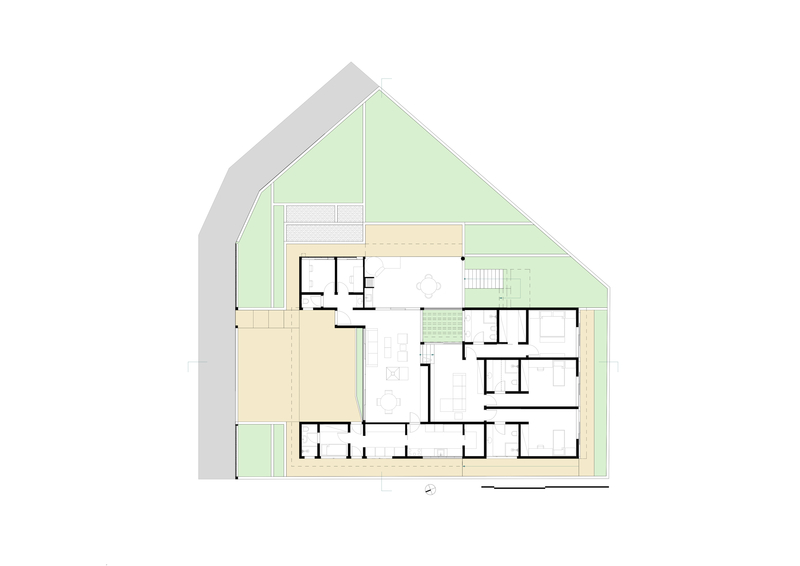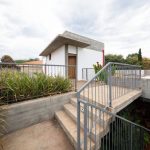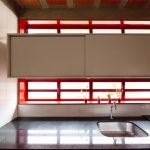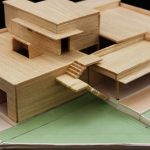Projects / Residential / AM House
Three questions guided us in the AM House design: free area, rainwater, and the level of construction on the lot in relation to the street view.
The house was designed so that the garage level is 30cm higher then the level of the sidewalk, in order to solve both the issue of rainwater drainage and possible concealment of the building in relation to the surroundings. To avoid an excessive height of the retaining wall at the bottom of the terrain, the dwelling has a “break” of 65cm in the internal levels: the intimate area of the program is lower and private compared to the higher and more social area of the house.
In order to conserve the maximum free area, the strategy adopted was to concentrate the necessities program in such a way as to create a prismatic core, opening when convenient to better direct natural light and ventilation, organizing the internal spaces and avoiding corridor areas.
The external staircase connects the balcony to the upper portion of the dwelling, a solution that comes from a special request from the clients: an isolated room with an independent access from the house, a room that would serve as practice room for a band. The adopted solution, positioning the room on the upper floor, places the sound and vibration on top, acoustically isolated. The balcony is an important axis of access to the practice room: the external concrete staircase, allows access not only to the practice room, but also to a garden terrace, ensuring the best view, ventilation and sun light of the terrain, facing southeast.
The necessities program is accommodated by a woodboard reinforced concrete structure, which beams overcome large spans, transversely and longitudinally.
The sun position is important to the position of each room of the house. The front of the lot receives sun throughout the day (north, northeast), resulting in blind facades, with only an indirect source of light, captured by the cobogós (permeable concrete element), between the garage and living room. The facade located in the house keeping area (Northwest, West) receives partial sunlight during the afternoon.
The bedrooms natural ventilation are the most adequate, oriented towards the southeast, where the rare fresh winds of the city come from. The natural light of the bathrooms is visually controlled: windows of the main bathroom turns to the garden patio, while the natural light and ventilation of the central bathroom is provided by a skylight concrete folded roof. The three bedrooms share an intimate garden, with vertical landscaping on the border wall.
The balcony position (catalyst of natural light and ventilation in the house), turning to the garden, offers the required conditions and views to work (home office) and faith (oratorio). To prevent the morning sunlight overheating these rooms, concrete blinds partially enclose the facade.
The resultant could be no other than an architecture whose aesthetics is directly linked to the functions it performs. Constructive didactics allows the way of viewing: the apprehension of the architecture space as a school.
Technical specifications
ResidentialRibeirão Preto - SP
PROJECT
2014 - 2016
STAGE
Built
ARCHITECTURE
Fernando Gobbo and Larissa França
Collaborator: Francisco Segnini Junior
STRUCTURE
Marco Antonio Pinheiro
CONSTRUCTION
Sprint Engenharia
ENGINEER RESPONSIBLE FOR CONSTRUCTION
Jonas Rubião Gonzales
PLUMBING INSTALLATIONS DESIGN
A. L. Engenharia
ELECTRIC INSTALLATIONS DESIGN
Charles Grau
LIGHTNING DESIGN
Projeta Iluminação
TOPOGRAPHY
SondoBase
LANDSCAPE DESIGN
LAND N CITI
DOOR AND WINDOW FRAMES
Serralheria Seis Emes
WOODWORK DESIGN
Cynthia Movizzo e Giovanna Fanucchi
TOTAL TERRAIN AREA
726,25 m²
BUILT AREA
369,30 m²
PHOTOGRAPHY
Manuel Sá
CONSTRUCTION PHOTOS
Carolina Boccato
PRESS
Casa AM - ArchDaily Brasil
AM House - ArchDaily
Casas brasileiras: 15 residências com varandas - ArchDaily Brasil
Casas brasileiras: 20 residências com iluminação zenital - ArchDaily Brasil
AM House - ArchDaily China
AM House - Archello
Arquitetura inteligente - Revista InterArq Interior SP n. 31


